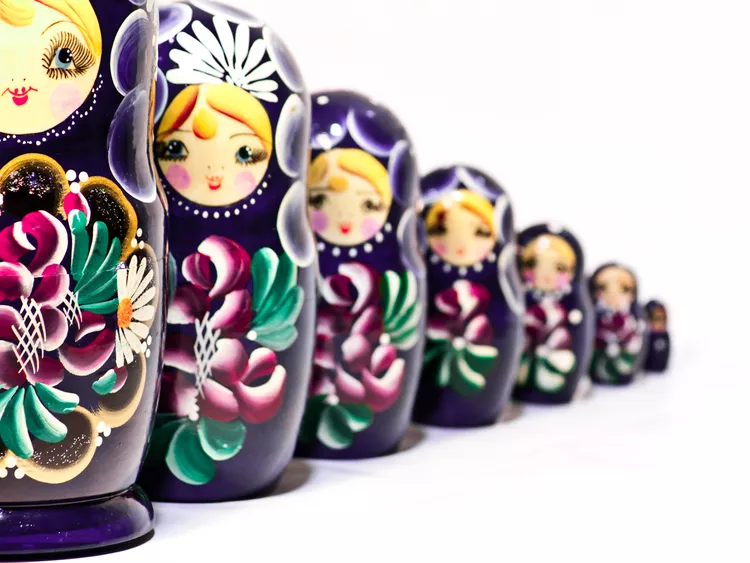Summary
Nesting Dolls — in Their Native Russian
Definition of Matryoshka
A matryoshka (plural: matryoshki) is a Russian nesting doll, often referred to simply as nesting dolls. Pronounced mah-tree-YOSH-kah, these intricate dolls open to reveal successively smaller versions of the same doll, one within another. The smallest doll is crafted from a solid piece of wood, showcasing a beautiful and artistic design tradition.
While nesting dolls are prominent symbols of Russian culture, they actually have roots in similar dolls created in Japan.
Etymology of Matryoshka
The name “Matryoshka” has connections to the Russian word for “mother,” which is мать. The term matriosha evokes a warm, motherly sound and may relate to the Latin word “mater,” meaning mother as well. It is believed that matryoshka derives from this female name that was popular when these dolls first emerged. Upon examining matryoshka dolls, one can see how they symbolize family dynamics, often depicting the largest doll as the mother or grandmother and the smaller dolls representing daughters or younger generations.
Information about the Dolls
Matryoshka dolls are cherished and iconic Russian souvenirs. They can be purchased in simple sets of five or seven, while more elaborate versions may contain 20 or more nesting dolls. Typically, matryoshki are painted to resemble cheerful women adorned with kerchiefs. However, some matryoshkas can also depict elements from Russian fairy tales or notable figures from Russian history and pop culture. It’s important to note that the term matryoshka is often mistakenly interchanged with “babushka,” which means grandmother in Russian.
Development and History
As a traditional craft, matryoshki are relatively modern, first appearing in the late 19th century. Their creators drew inspiration from similar Japanese dolls, but uniquely infused them with Russian folk elements, portraying women in traditional attire with kerchiefs and aprons. Matryoshki gained widespread popularity after being showcased at an international exposition and remain a beloved representation of Russian culture today. In fact, the trend has transcended Russia, with nesting-doll designs appearing in household items, key rings, and decorative decals.
Due to the nature of wood, which changes with moisture levels, artisans must carefully consider this factor when crafting nesting dolls. Typically, a complete set is crafted from a single piece of wood, beginning with the smallest doll to ensure a proper fit for all larger versions.
Although matryoshki can also be found in neighboring countries like Poland and the Baltic region, Russia remains the primary hub for these beloved nesting dolls, where the widest variety continues to be available.
If you’re planning a trip to Russia, consider expanding your vocabulary with more Russian words to enhance your travel experience.





